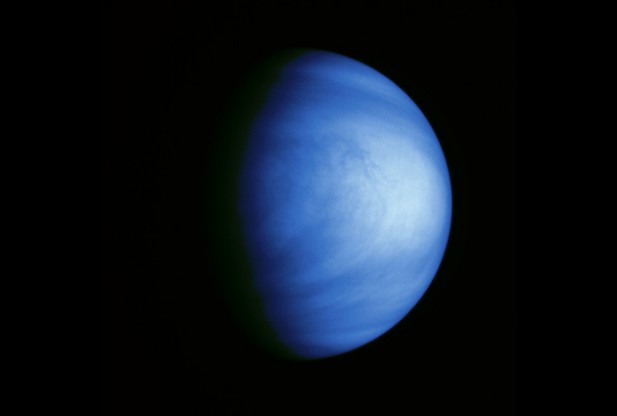A NASA rocket being sent up to study the atmosphere of Venus is slated for launch on Monday; just seven days after the space agency launched a probe to study the Martian atmosphere.
While the Mars Atmosphere and Volatile Evolution (MAVEN) mission launched from Cape Canaveral Air Force Station in Florida, the Venus Spectral Rocket (VeSpR) lifted off from White Sands, N.M., on Nov. 25.
“It is appropriate that these launch dates are close together, because both missions will study atmospheric loss,” said Kelly Fast, the program scientist for MAVEN and the program officer for Planetary Astronomy at NASA Headquarters in Washington. “VeSpR will peek at Venus from above Earth’s absorbing atmosphere, and MAVEN will journey to Mars to do a long-term study.”
For VeSpR, NASA created a two-stage launch system, which utilizes a repurposed military missile and a sounding rocket with a telescope. The two stages were integrated at NASA’s Wallops Flight Facility in Virginia.
The sounding rocket will scan for ultraviolet light being emitted from Venus’ atmosphere. The NASA scientists said they expect these scans will provide data on the history of the planet’s water. The UV scans cannot be performed from an Earth-based site due to the UV-absorbing effects of our own atmosphere.
To perform these scans, the rocket will lift the telescope more than 65 miles above the Earth’s surface – where the atmosphere is thin enough to permit UV readings.
“Venus today has a thick atmosphere that contains very little water, but we think the planet started out with an ocean’s worth of water,” said John T. Clarke, the mission’s principal investigator and an astronomer from Boston University.
Scientists don’t know if water ever flowed on the surface of Venus or only existed as vapor high up in the atmosphere. If the surface of Venus stayed below the boiling point of water long enough, liquid water or ice may have once existed on the planet’s surface.
To solve this mystery, NASA scientists must determine how much hydrogen and deuterium, a heavier isotope of hydrogen, is in the atmosphere. Both can combine with oxygen to make water, a compound called HDO or, in rare cases, D2O.
Radiation from the Sun has separated almost all of the water molecules in Venus’ atmosphere. Lighter, regular hydrogen atoms tend to escape into space more quickly than the heavier deuterium isotope. By determining the deuterium to hydrogen ratio, NASA scientists can determine how much water has left Venus and how quickly it happened.
Based on data collected by NASA’s Pioneer probe in 1978 and other observations, past studies have found that Venus could have had enough water at one point in its history to cover the whole globe with 23 feet of liquid. More recently, scientists have found that the amounts of hydrogen and deuterium can change at different heights in Venus’ atmosphere. To see if past calculations are correct, VeSpR will be used to gather information specifically from the upper atmosphere.
The two-stage launch system will allow VeSpR to observe Venus for 8 minutes before the rocket’s payload returns by parachute safely to Earth.
By: Brett Smith
To view the original article CLICK HERE


